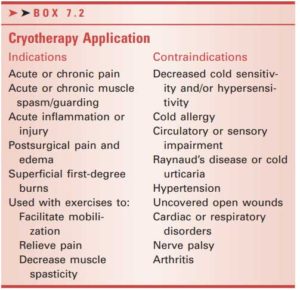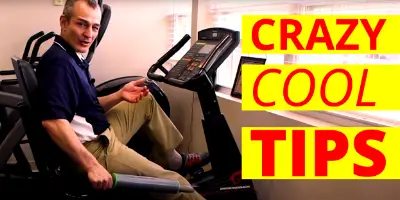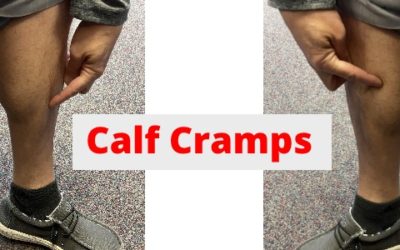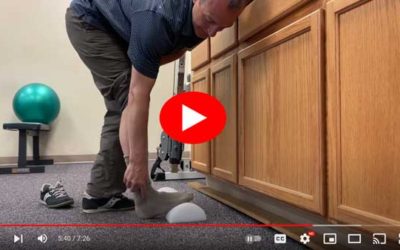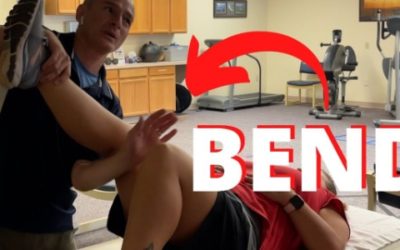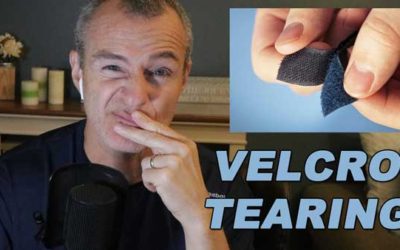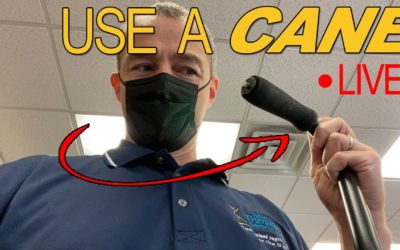How long should I ICE my knee after knee replacement?
Article Updated 06/08/2022
How long should I ice my knee after knee replacement surgery?
After a total knee replacement surgery many surgeons will often recommend icing the knee as often as possible.
In this article, I will review the current myths and misconceptions about using cryotherapy after knee replacement surgery and what is the number 1 reason to consider icing.
3 of the Most Common Myths Around Icing After Surgery:
- Icing reduces inflammation
- Icing reduces swelling
- Icing helps to heal injured tissue
3 Actual Truths Behind Icing After Surgery:
- Cold therapy will numb the superficial nerve endings which may reduce the experience of pain.
- Cold therapy provides a novel stimulus for the central nervous system and may interrupt the transmission of information being perceived as threatening.
- Cold therapy is inexpensive and easy to use at home. It is convenient and provides you with a sense of control which may help empower you to take control of your pain.
What does the research suggest?
A 2007 study determined that only an analgesic effect was demonstrated with continuous cooling. This study also determined that 4 degrees Celsius (39.2 degrees Fahrenheit) was determined to be comfortable for most patients. [1] A 2012 study analyzing the possible benefits of R.I.C.E. was inconclusive. [2]
How long should I place ice on my knee?
According to Therapeutic Modalities “Cryotherapy is usually applied for 20 to 30 minutes for maximum cooling of both superficial and deep tissues.” In many physical therapy clinics, the common recommendation is 10-minutes of sustained application. A couple of considerations to determine the length of time ice is placed on your post-surgical knee include
- How cold is the ice pack?
- Are you placing a piece of cloth or other covering between the ice and your skin?
- Are you applying ice to a part of the body with a thicker fatty tissue layer?
When should an ice pack be avoided?
The following table comes from Therapeutic Modalities section II page 168 –
Myth Buster #1 – Cryotherapy does not reduce inflammation.
Inflammation is a chemical process within the body and is largely regulated by the immune system. Placing an ice pack on the skin to change the skin’s temperature will not significantly impact the chemical response to tissue injury and repair known as inflammation.
Myth Buster #2 – Icing reduces swelling
Swelling and edema are also regulated by chemical changes at the site of injury. Changes in temperature applied to the skin can not significantly change the chemistry deep under the skin. If a noticeable change in swelling is noted upon removal of an ice pack it is largely due to the mechanical compression of the ice pack squeezing the fluid out of the area and not due to the cold temperature of the ice pack.
Myth Buster #3 – Icing improves healing.
Since the healing response is autoregulated by the body’s immune system, changes in superficial skin temperature have not been shown to significantly affect healing times. The best-known evidence of healing tissue following surgery includes a short episode of rest followed by an active recovery guided by a physical therapist, occupational therapist, or other qualified healthcare professional.
Summary:
Based on the available evidence, I would recommend using either cold therapy or heat therapy solely for an analgesic benefit. I would advise against taking time away from a more active recovery to sit with an ice pack or heating pad on your knee. If cold or warmth feels good and helps bring relief between bouts of activity these modalities are generally considered low risk for complications and inexpensive.
The bottom line is to do what feels good while you are resting, but stay active and keep moving when possible.
Facebook Group Comments
Another trick that helped me, was carrying an old fashion ice bag around and keeping ice on my knees all day even while going on excursions. Most restaurants and QT‘s gas station will let you fill up a cup and pour it into your ice bag. This bag CVS
Cited References:

Anthony Maritato, PT
Physical Therapist
Anthony Maritato, PT has been a licensed physical therapist and private practice owner since 2006. Ohio license #PT011602.
Anthony has been passionate about helping patients recover from total knee replacement surgery as well as rotator cuff repair surgery.
About the Author -
Anthony Maritato, PT has been a licensed physical therapist since 2006. He specializes in post surgical care and rehabilitation of total knee replacement and rotator cuff repair surgery.
Mr. Maritato is also nationally recognized as a therapist educator teaching courses related to Medicare reimbursement, contracting, and documentation.
Total Therapy Solutions LLC is Tony's primary practice which he owns with his wife Kathy who is also a licensed physical therapist.
More Blog Posts …
Knee Pain 1 Year After Knee Replacement Surgery
Nearly 20% of patients who have undergone total knee replacement are not happy with the outcome. [1] Dr. Scott Albright, MD. Dr. Albright is a non-surgical orthopedic specialist and in my opion one of the best sports medicine doctors in Middletown, Ohio. He has...
Is a recumbent bike good for knee replacement?
Riding a recumbent bike after a total knee replacement can be a great way to increase range of motion, increase cardiorespiratory fitness, and improve overall well being. In this video I explain some tips and tricks we use in the clinic to help clients maximize the benefit of riding this bike.
Calf Cramps How to STOP Calf Cramps
How to Stop Calf Cramps at Night When They are Happening One of the must frustrating times to get a calf cramp is in the middle of the night. You may be sound asleep when all of a sudden you experience this intense shooting pain which causes you to draw up in writhing...
3 TIPS to STOP Ankle Pain After Knee Replacement Surgery
Ankle pain after total knee replacement surgery is very common. Osteoarthritis of the knee causes the knee to change shape over time. The knee replacement surgery will correct any malalignment of the knee, but it causes excessive stress on the ankle and hip. In this...
Is a Manipulation Under Anesthesia MUA Painful
No, during a manipulation under anesthresia after a total knee replacement you will be placed under sedation and the procedure is painless. During the following 24 to 48-hours you may feel some increased soreness and swelling, but very few patients actually reqort...
Recovery After MUA Manipulation Under Anesthesia [VIDEO]
Video SeriesAnthony Maritato, PT has been a licensed physical therapist and private practice owner since 2006. Ohio license #PT011602. Anthony has been passionate about helping patients recover from total knee replacement surgery as well as rotator cuff repair surgery.
Hip and Groin Pain After Total Knee Replacement Surgery
I couldn't find peer-reviewed data to support an answer to this question, but as a physical therapist with 20 years of history in the clinic, I can tell you that anterior hip and groin pain after a total knee replacement is not uncommon. As of writing this article on...
How Painful Is A Total Knee Replacement
How long does the pain last after a knee replacement? * How bad is the pain after knee replacement surgery? * Why is a knee replacement so painful? * What helps pain after a total knee replacement?
2 Reasons why your knee replacement sounds like Velcro tearing!
The two reasons why your total knee replacement sounds like Velcro tearing when standing up from a chair or walking downstairs are because the underside of your patella is rubbing against the bottom of your femur or you are experiencing the sensation of scar tissue...
When can I switch from a walker to a cane?
Between 10 and 14 days after total knee replacement surgery, most patients have switched from a walker to a cane. Of course, some patients never use a cane and just progress from the walker to no assistive device after a couple of days, while other patients depend on...
